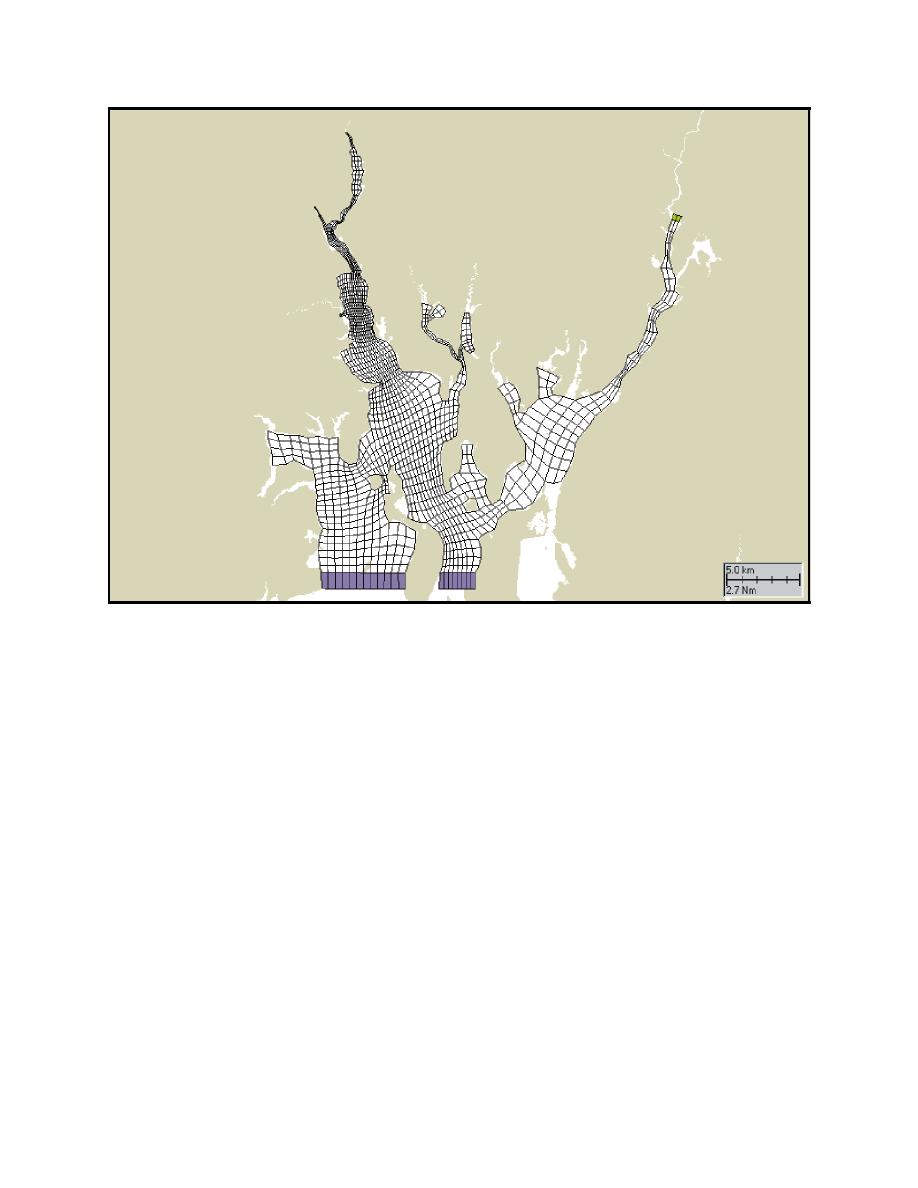 |
||
|
|
||
|
Page Title:
Figure 2. Model computational grid for the Providence River and Upper Narrangansett Bay |
||
| |||||||||||||||
|
|
 ERDC TN-DOER-E12
July 2000
Figure 2. Model computational grid for the Providence River and Upper Narrangansett Bay
Using the flow fields provided by the 3-D hydrodynamic model, SSFATE was applied to simulate
the fate of dredged material released during dredging operations. The model uses a fine grid (20 m
(61 ft) square) that overlies the boundary-fitted hydrodynamic grid shown in Figure 2. This square
grid was used to provide finer resolution for the transport calculation while retaining the highly
efficient algorithms in SSFATE that advect Lagrangian particles through a square grid. Particle
movement is based on an advective velocity calculated from interpolated hydrodynamic model
results plus a diffusive velocity that vectorially adds a random component based on a typical
estuarine dispersion. A Chezy formulation is used to estimate the diffusion as a function of Manning
friction factor, local depth and local velocity (Rouse 1949).
Accurate specification of the sediment loads is crucial when applying SSFATE. For this application,
the dredged material loads were assumed to consist of continuous sources of material as opposed
to a series of individual events. This approximation was made since the bucket is drawn through
the water column with a new load of material approximately every 90 sec. Since the maximum
ambient velocity is 10-25 cm/sec (0.33-0.82 ft/sec), the maximum travel distance for a single plume
to move away from the dredge is only 9 to 22.5 m (30 to 74 ft). At this distance from the dredge,
there is not sufficient resolution to differentiate between consecutive bucket cycles. Thus, a
continuous load was used.
5
|
|
Privacy Statement - Press Release - Copyright Information. - Contact Us - Support Integrated Publishing |